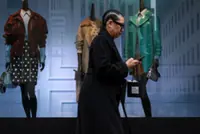Rising trends: People seen outside a Bvlgari store in Seoul. The fashion industry is projecting those under-20 will become a major consumer group for luxury goods. — AFP
SEOUL: While it’s not breaking news that luxury fashion houses have been broadening their customer bases to younger customers, teenagers have risen as a new lucrative target demographic for such brands.
More teenagers are purchasing high-end goods – everything from lower-priced luxury beauty products and shoes to pricier bags, watches and jewellery.
Already a subscriber? Log in
Save 30% OFF The Star Digital Access
Cancel anytime. Ad-free. Unlimited access with perks.





